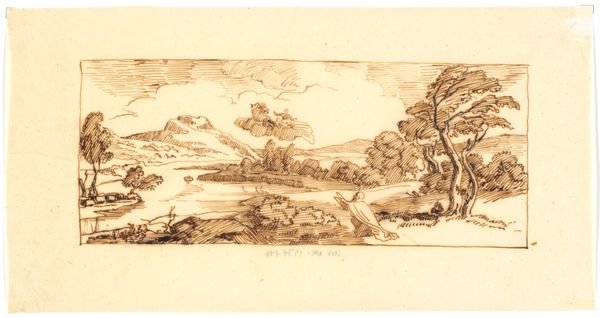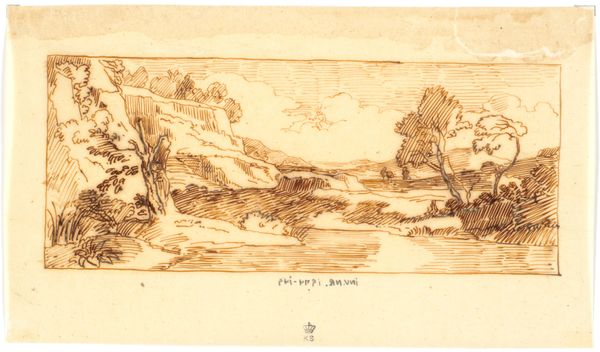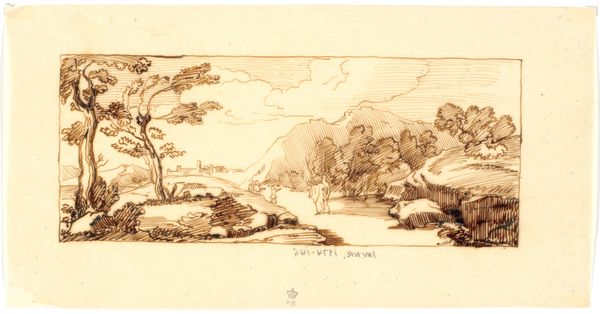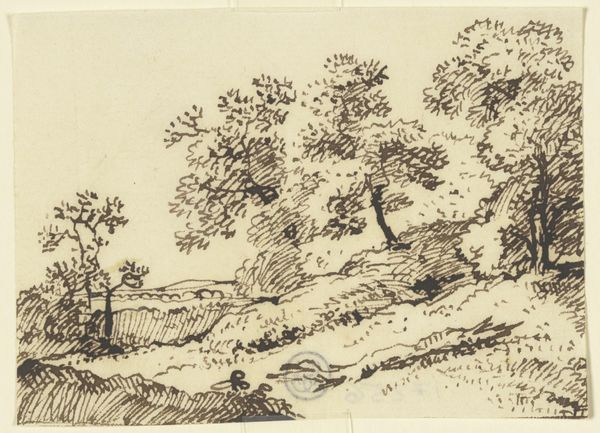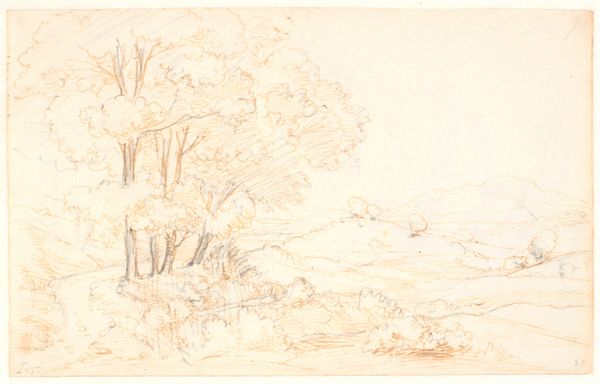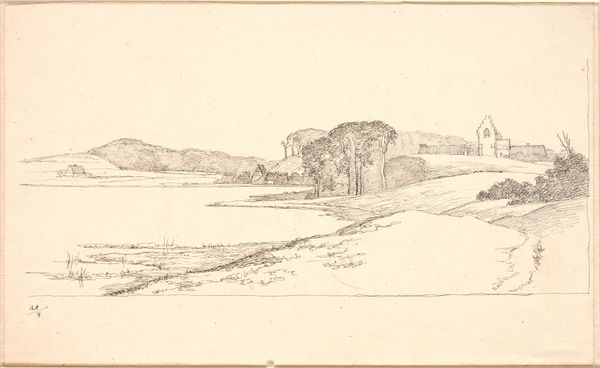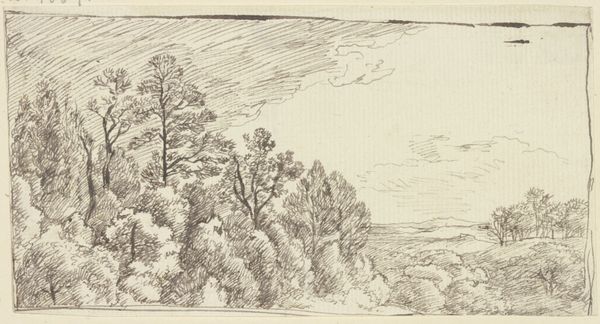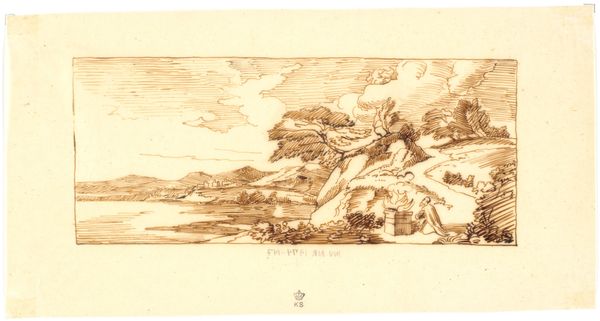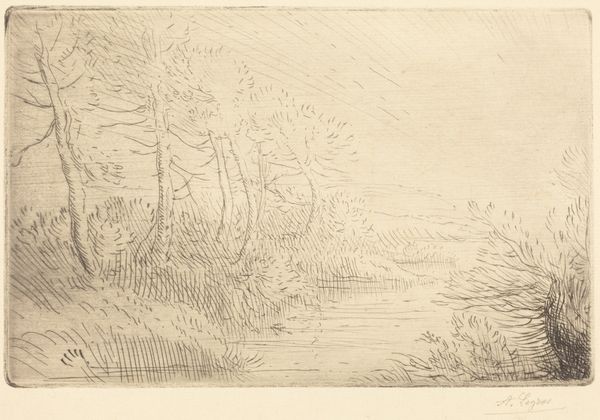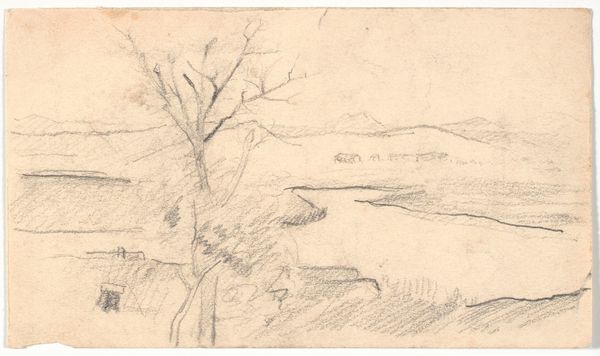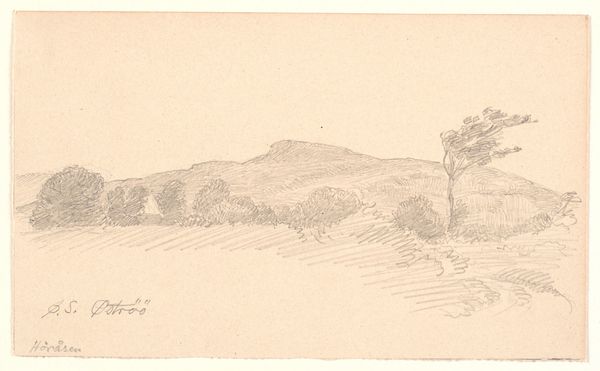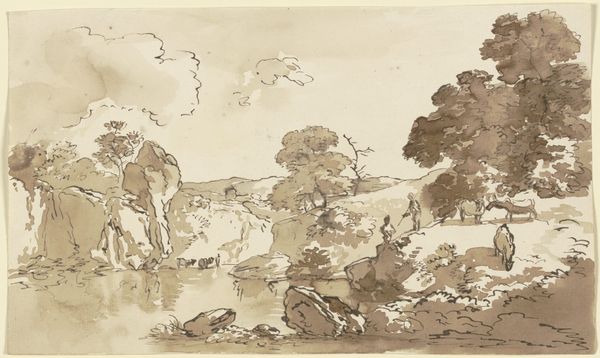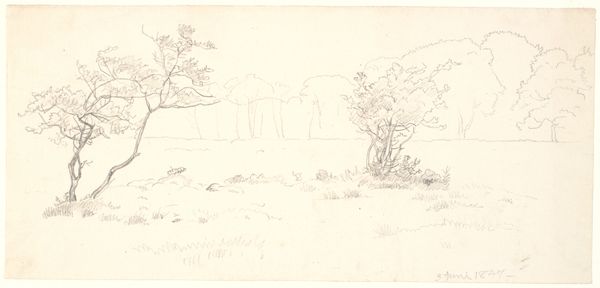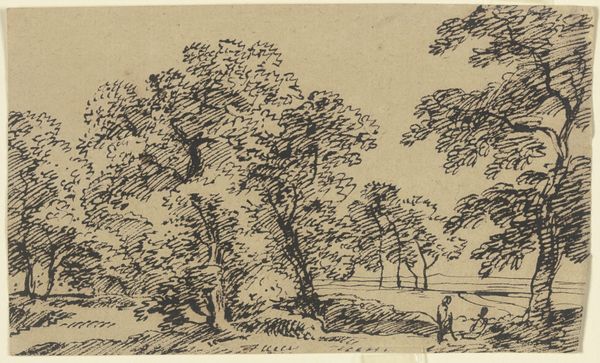
drawing, ink
#
drawing
#
landscape
#
figuration
#
ink
#
romanticism
Dimensions: 113 mm (height) x 220 mm (width) (bladmaal), 70 mm (height) x 171 mm (width) (billedmaal)
Curator: Looking at this understated sepia drawing, it seems to exude an intimate calm. The thin, dry lines offer detail but somehow enhance its tranquil impact, don't you think? Editor: It has that quaint aura of Romantic landscapes. I understand that Martinus Rørbye completed it between 1803 and 1848. He worked with ink as his medium and figuration and Biblical narrative as a loose theme to convey. However, I'm curious about his choice of ink; what sort of ink was typically used for this effect during this period and does it offer insight into this artwork? Curator: Interesting point! Knowing the precise ink could indeed reveal more about Rørbye's process. But look how this drawing, with its landscape, pulls from larger ideas about connecting national identity with representations of land. He's not simply illustrating scripture but associating it with place and with nationhood. This type of drawing had value to a developing state looking for images that resonate with culture and progress. Editor: Yes, Rørbye often worked within the established circuits, accepting patronage to create art that reinforced certain values. Yet his medium, a humble ink drawing, contradicts the grandiose oil paintings often commissioned for nation-building narratives. Do you suppose the landscape is also representative of Romantic ideas and the process of creating works of art outside establishment tastes and instead more focused on everyday life and experiences? Curator: Absolutely. Romanticism infused everything. Rørbye's contribution sits at an intriguing intersection. While adhering to convention to sustain his livelihood as an artist, he uses artmaking choices in the creative process that add unique expression and subtle details to his work that resonate far beyond that period, right up until today. It speaks to an artist making do but retaining their values within constraints. Editor: A fascinating duality indeed. He's walking a line between tradition and innovation and pushing boundaries as a maker, no doubt creating and setting trends through practice, while nodding to establishment norms, too. Curator: It's work like this that reminds me of the public role art plays in building shared histories and meanings, even through quiet, less audacious means. Editor: A reminder that value often comes not just from spectacle but from the quiet labor embedded within making, the materiality informing deeper stories of individuals and of nations.
Comments
No comments
Be the first to comment and join the conversation on the ultimate creative platform.
